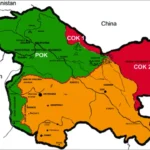In a significant advancement for climate science and environmental monitoring, the European Space Agency (ESA) has successfully launched the long-anticipated Biomass satellite , a cutting-edge Earth observation mission designed to map the world’s forests in unprecedented detail. The launch, which took place aboard a Vega rocket from Europe’s Spaceport in French Guiana, marks a major milestone in the global effort to monitor carbon stocks and understand their role in climate change.
🚀 A Mission with Global Impact
The Biomass satellite is the first space mission dedicated to measuring the amount of carbon stored in the Earth’s forests, making it a vital tool in tracking deforestation, reforestation, and forest degradation. Equipped with a state-of-the-art P-band synthetic aperture radar (SAR), the satellite will penetrate forest canopies and provide detailed 3D images of tree structure and biomass.
Unlike previous missions that primarily assessed surface vegetation, Biomass is capable of measuring forest height, thickness, and carbon density—data critical for policymakers, researchers, and environmental agencies working to mitigate global warming.
🌲 Why Biomass Monitoring Matters
Forests act as one of the Earth’s most powerful carbon sinks, absorbing around 30% of human-generated carbon dioxide emissions annually. However, deforestation and forest degradation are rapidly diminishing this capacity.
The Biomass mission addresses this challenge by providing reliable, high-resolution data that can:
- Accurately estimate carbon stocks in tropical, temperate, and boreal forests
- Monitor changes over time, detecting both deforestation and regrowth
- Support international climate agreements such as the Paris Agreement and REDD+ initiatives
- Assist local communities and governments in managing natural resources sustainably
By offering consistent, global data over its planned five-year mission lifespan, the satellite will fill a critical gap in climate observation and support efforts to curb emissions.
🔍 How the Biomass Satellite Works
At the heart of the satellite’s capability is its P-band radar, which operates at a low frequency of around 435 MHz. This enables it to penetrate through thick foliage and capture detailed structural data from the forest floor to the canopy top—a feat that higher-frequency radar and optical satellites cannot accomplish.
The radar can detect tree trunks, branches, and understory vegetation, which are key indicators of total biomass. The satellite will orbit the Earth in a near-polar, sun-synchronous orbit, scanning the globe every few days and building a comprehensive global forest map every six months.
Additionally, the Biomass satellite features:
- A 12-meter-long deployable radar antenna
- Advanced data processing units to handle vast volumes of backscatter signals
- Secure links to ground stations for real-time data transmission
🛰️ International Collaboration and Technological Innovation
The Biomass mission is part of ESA’s Earth Explorer program, which supports innovative satellite missions that address key scientific challenges. The satellite itself was developed in collaboration with multiple European partners, including Airbus Defence and Space, which led the satellite’s construction.
The mission has also gained international interest from space and environmental agencies in the United States, Brazil, and Southeast Asia, where forest monitoring is vital for both ecological and economic reasons.
Simonetta Cheli, Director of Earth Observation Programs at ESA, commented:
“The successful launch of Biomass is a turning point in our ability to monitor forests globally with unparalleled accuracy. This mission will empower climate action with real, actionable data.”
🌐 Applications Beyond Forestry
While forest monitoring is Biomass’s primary goal, the data it collects will also support broader scientific research, including:
- Soil moisture mapping in arid regions
- Monitoring ice sheets in polar regions by detecting sub-surface ice structures
- Studying tectonic movements and geological features through dense vegetation
Such versatility makes Biomass a multi-purpose environmental tool, enhancing our understanding of Earth’s dynamic systems.
🔮 Looking Ahead
With its successful deployment now confirmed, Biomass is expected to begin full scientific operations within a few months, following initial calibration and testing phases. The satellite’s insights will support climate scientists, governments, NGOs, and even private-sector environmental initiatives focused on carbon offsetting and sustainable land use.
As the world races to limit global warming to under 1.5°C, technologies like the Biomass satellite represent crucial steps toward data-driven climate solutions.





